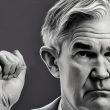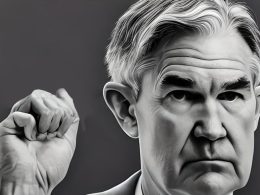by Brian S. Wesbury – Chief Economist & Robert Stein, CFA – Deputy Chief Economist, First Trust Portfolios
For nine of the last fifteen years, few people thought about the Fed. Sure, we discussed QT and QE, but the Federal Reserve held interest rates at zero year after year. In 2017 and 2018, they lifted rates and it was all anyone talked about. Then they cut them to zero and the noise went away. Now, with rates headed up, all eyes are again on the Fed, and investors are parsing every word of its statements and the Powell press conferences.
As of Friday, the futures market expects a quarter-point rate hike on Wednesday, but then a series of rate cuts that start in the third quarter.
Why the market expects rate cuts is unclear. The next key inflation print – the consumer price index for April, which arrives, May 10 – is coming in hot. At the same time, longer-term bond yields are drifting down, and stock prices have been rising. That’s not a tightening of “financial conditions” that some models of monetary policy watch. And we have yet to see the kind of weakness in the labor market that would get the Fed to stop hiking rates.
At the same time…yes, banks are in some trouble because of mismatched liabilities and assets…but the Fed has used the FDIC and a bond buyback program to wall off these problems.
Meanwhile, too few policymakers or investors are following what’s happened to the M2 measure of the money supply. After surging about 40% in the first two years of COVID, M2 hit a plateau in early 2022 and then started dropping last summer. M2 is down 4.1% in the past eight months, the steepest decline since the early 1930s.
If this decline is real (there are some reasons for skepticism given that the Fed releases these data less frequently than in the past and with less detail) and if it continues through 2023, then by 2024 the economy could be in for not only a recession but also a sudden and sharp decline in inflation. Why the press never asks about a decline in M2 that we haven’t seen since the Great Depression is a mystery.
Also a mystery, is whether anyone in the press corp – even just one journalist – has the bravery to ask Powell in public how the Fed is financing its day-to-day expenses now that it’s paying banks more to hold reserves than it earns on its portfolio of Treasury and mortgage-backed bonds. The Fed has negative cash flow and has lost more than its actual capital. Is the Fed letting some of these bonds mature and using that cash for expenses? Is it printing money?
So far this year, we think most investors have convinced themselves of overly pleasant narratives about the economy and the path for monetary policy. One of them is that the Fed will cut rates this year. We don’t think this happens and maybe a re-thinking of those pleasant narratives starts soon.
Brian S. Wesbury – Chief Economist
Robert Stein, CFA – Deputy Chief Economist
Click here for a PDF version
Copyright © First Trust Portfolios
















